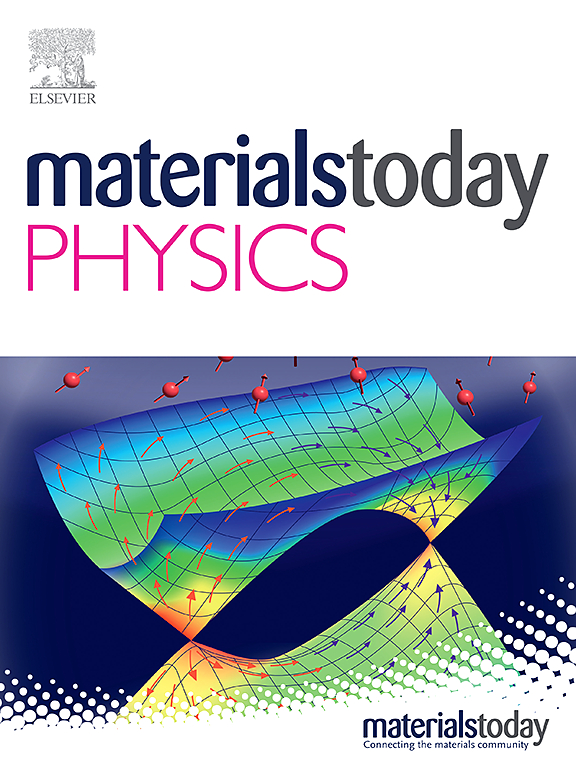宽带超快激光器用二维材料Y2Ti2O5S2缺陷工程
IF 10
2区 材料科学
Q1 MATERIALS SCIENCE, MULTIDISCIPLINARY
引用次数: 0
摘要
本文研究了一种新型宽带二维材料,并将其应用于超快固体激光器。为了比较Y2Ti2O5S2-SSR和Y2Ti2O5S2-Mg,分别采用固态反应(SSR)法和掺镁助焊剂法合成。根据第一性原理计算,引入S-Mg-S层缺陷后,Y2Ti2O5S2-Mg (YTOS-Mg)的带隙宽度大大减小。显微结构表征证实了YTOS-Mg的形态改变。非线性光响应实验进一步证明了YTOS-Mg比Y2Ti2O5S2-SSR (YTOS-SSR)具有更低的饱和强度和更高的调制深度,这是激光谐振腔中光调制器的两个重要指标。YTOS-Mg首先被制成可饱和吸收体,并应用于全固态激光器。在1 μm和2 μm区域分别产生了最小脉冲宽度为149 ps和1.4 ns的调q锁模激光器。实验结果表明,YTOS-Mg是一种新型宽带可饱和吸收材料。它在超快激光产生中显示出巨大的应用潜力。本文章由计算机程序翻译,如有差异,请以英文原文为准。

Defect engineering of Y2Ti2O5S2 two-dimensional material for broadband ultrafast lasers
In this paper, a novel broadband two-dimensional material was investigated and applied in ultrafast solid-state lasers. For comparison, Y2Ti2O5S2-SSR and Y2Ti2O5S2-Mg were synthesized by solid-state reaction (SSR) method and Mg-doped flux approach respectively. Based on the calculation of first principles, the bandgap width of Y2Ti2O5S2-Mg (YTOS-Mg) was greatly reduced by introducing S–Mg–S layer defects. Microstructural characterization confirmed morphological changes in YTOS-Mg. Nonlinear optical response experiment further demonstrated YTOS-Mg possessed a lower saturation intensity and higher modulation depth than Y2Ti2O5S2-SSR (YTOS-SSR), which are two significant indicators for optical modulators in laser resonator. The YTOS-Mg was first fabricated as saturable absorber and applied in all-solid-state lasers. Q-switched mode-locking lasers with minimum pulse widths 149 ps and 1.4 ns were generated in 1 μm and 2 μm region. The experimental results indicate the YTOS-Mg is a novel broadband saturable absorber. It exhibits significant potential for applications in ultrafast lasers generation.
求助全文
通过发布文献求助,成功后即可免费获取论文全文。
去求助
来源期刊

Materials Today Physics
Materials Science-General Materials Science
CiteScore
14.00
自引率
7.80%
发文量
284
审稿时长
15 days
期刊介绍:
Materials Today Physics is a multi-disciplinary journal focused on the physics of materials, encompassing both the physical properties and materials synthesis. Operating at the interface of physics and materials science, this journal covers one of the largest and most dynamic fields within physical science. The forefront research in materials physics is driving advancements in new materials, uncovering new physics, and fostering novel applications at an unprecedented pace.
 求助内容:
求助内容: 应助结果提醒方式:
应助结果提醒方式:


